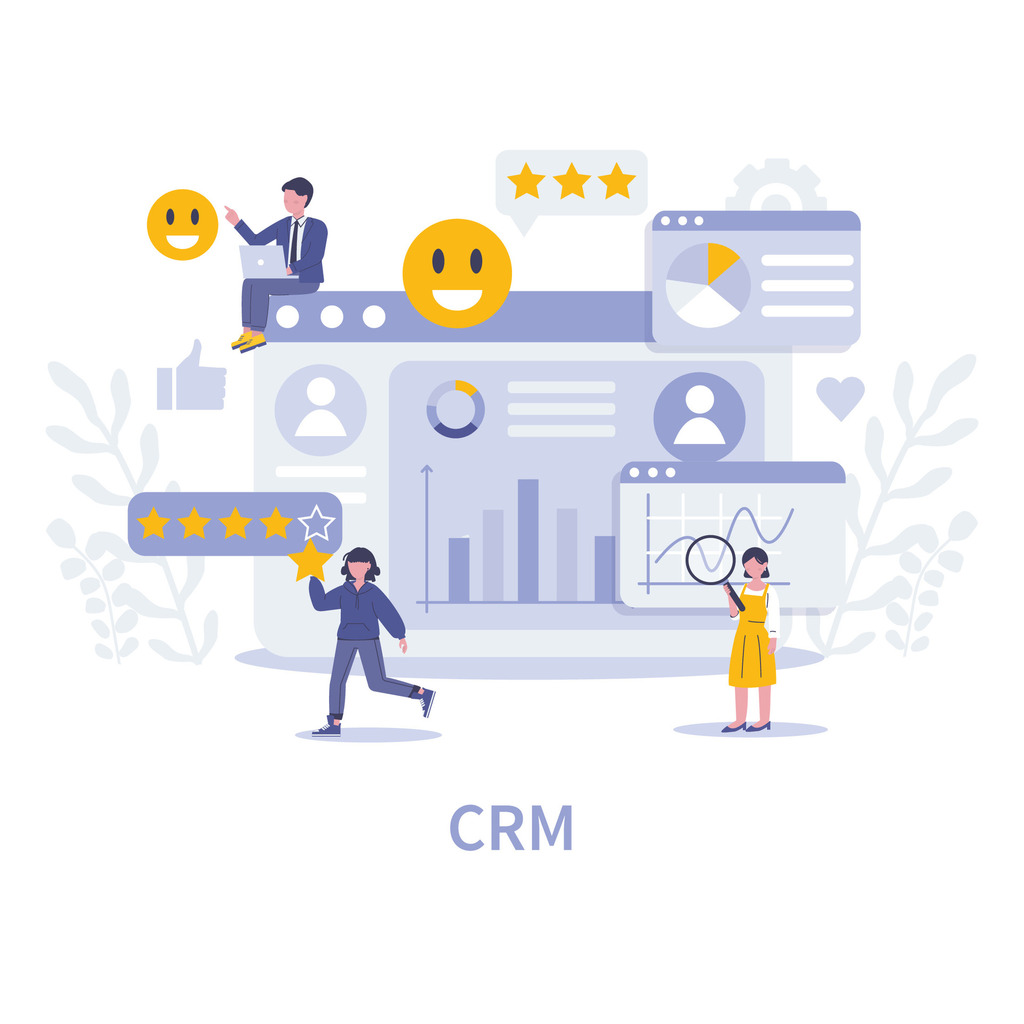Seamless CRM Integration Solutions for Business Efficiency

Modern companies face mounting pressure to unify scattered workflows through CRM integration. Disconnected tools create data gaps, slow response times, and frustrate teams managing customer relationships. A centralized platform solution bridges these divides, enabling real-time information sharing across departments.
Automated synchronization eliminates manual data transfers between sales pipelines and support systems. This reduces errors while freeing staff to focus on strategic tasks. Teams gain immediate access to updated client histories, purchase patterns, and communication logs – critical for personalized engagement.
Therefore, adopting compatible technologies ensures that information flows securely between applications. As a result, decision-makers see faster results when marketing campaigns align with inventory levels and service capacity. Consequently, businesses using connected platforms report 27% shorter deal cycles and 19% higher customer retention.
Key Takeaways
- Unified systems break down barriers between departments
- Automated data sharing minimizes manual entry errors
- Real-time updates improve response to client needs
- Scalable tools adapt to evolving business requirements
- Cross-platform compatibility drives operational efficiency
Introduction to Seamless CRM Integration Solutions
However, operational silos plague organizations relying on multiple platforms.
Moreover, fragmented systems force teams to waste hours reconciling inconsistent records instead of serving clients.
Ultimately, unified platforms eliminate these barriers by connecting sales pipelines, support tools, and marketing channels through automated workflows.
Why Connected Systems Matter
Businesses gain measurable advantages when unifying their tech stack. A study by ClearCRM reveals companies using CRM automation strategies reduce manual corrections by 68% while accelerating sales cycles. Real-time data flow ensures teams access accurate customer histories during every interaction.
| Challenge | Disconnected Tools | Integrated Platforms |
|---|---|---|
| Data Accuracy | Frequent errors requiring manual fixes | Auto-synced records across systems |
| Response Time | Delays from switching applications | Instant updates enable faster decisions |
| Customer Experience | Inconsistent service quality | Personalized interactions at scale |
Transforming Business Outcomes
Notably, centralized systems create single sources of truth for client data.
Meanwhile, marketing teams adjust campaigns based on real-time inventory levels, while service agents resolve issues faster using complete interaction logs.
Consequently, this alignment reduces friction in customer journeys and strengthens retention.
Significantly, forward-thinking companies report 31% shorter onboarding times after adopting connected platforms.
Furthermore, standardized processes ensure every team member delivers consistent service quality, regardless of which tool initiates the interaction.
How Seamless CRM Integration Drives Business Efficiency

Firstly, scattered data creates roadblocks for sales teams juggling multiple platforms.
Subsequently, centralized systems remove these obstacles by automating critical workflows, allowing professionals to prioritize revenue-generating activities over administrative tasks.
Accelerating Revenue Cycles
Significantly, automated data transfers between lead sources and management tools slash redundant entry work. Consequently, sales teams receive real-time updates on prospect interactions, enabling faster follow-ups. According to research, one study shows businesses using these methods close deals 22% faster than competitors relying on manual processes.
Eliminating Low-Value Tasks
Systems that auto-populate contact records reduce errors by 73% compared to manual entry. This shift lets staff focus on strategic conversations instead of correcting mismatched information. “Teams regain 11 hours weekly previously lost to data cleanup,” notes a recent workflow optimization report.
| Metric | Manual Processes | Automated Systems |
|---|---|---|
| Data Entry Time | 14 hours/week | 2 hours/week |
| Follow-Up Speed | 48-hour average | 4-hour average |
| Pipeline Accuracy | 68% error rate | 94% accuracy |
Firstly, automation triggers personalized follow-ups based on customer behavior patterns.
As a result, sales professionals spend 63% more time building relationships instead of chasing outdated records.
Moreover, these improvements compound quarterly, delivering measurable gains in forecast reliability.
Integrating Tools and Systems for a Cohesive CRM Experience
Typically, businesses using diverse platforms often struggle with fragmented workflows.
In contrast, a unified approach bridges gaps between sales, marketing, and service tools, creating a frictionless operational environment. Ultimately, strategic alignment of these resources ensures teams access accurate data without switching applications.
Connecting with Preferred Platforms
Specifically, direct links to popular systems offer reliable data synchronization.
Additionally, each platform requires specific API configurations and authentication protocols to maintain security. Therefore, native connections preserve data accuracy while minimizing delays caused by manual transfers.
Utilizing Third-Party Extensions
Specialized add-ons expand functionality beyond standard features. These extensions enable custom workflows tailored to unique business needs. “Organizations gain flexibility without compromising core system performance,” explains a recent tech integration report.
Leveraging Automation Hubs
Platforms like Zapier connect hundreds of apps to central systems. Automated triggers sync contact details, task updates, and campaign metrics across tools. This approach eliminates compatibility barriers while reducing manual oversight by 58% in some cases.
- Native integrations ensure real-time data flow between primary tools
- Extensions adapt systems to industry-specific requirements
- Automation hubs create cross-platform workflows in minutes
Optimizing CRM Systems Using Data Analytics

Mid-sized businesses sit on untapped potential hidden within their operational data. Advanced analytics transforms this resource into actionable strategies, driving smarter decisions across departments. By analyzing patterns in customer behavior and operational workflows, companies gain clarity to refine processes and boost revenue.
Unlocking Actionable Insights for Mid-Sized Companies
Analytics tools convert scattered information into clear growth opportunities. One retail firm increased upsell revenue by 41% after implementing behavior-tracking software. These solutions identify which clients need attention and why, empowering teams to prioritize high-impact actions.
| Metric | Traditional Approach | Analytics-Driven System |
|---|---|---|
| Customer Retention | 68% annual rate | 83% annual rate |
| Upsell Success | 22% conversion | 39% conversion |
| Response Time | 24-hour average | 2.7-hour average |
Enhancing Customer Interactions with Real-Time Data
Instant access to purchase histories and communication logs lets teams personalize engagements. A service team using live dashboards resolved 58% more tickets within SLA last quarter. “Real-time insights create opportunities to surprise clients with relevant solutions,” notes a 2024 customer experience report.
Predictive models forecast needs before clients articulate them. This proactive approach reduces churn while increasing lifetime value. Companies using these methods report 34% faster issue resolution and 19% higher satisfaction scores.
Expert Guidance and Best Practices for CRM Integration

Successful platform alignment demands structured execution. Businesses that follow methodical implementation plans achieve 89% faster adoption rates compared to ad-hoc approaches. This section outlines field-tested strategies to optimize workflows while maintaining system cohesion.
Step-by-Step Implementation Strategies
Begin with a detailed audit of existing tools and data formats. Follow this five-step process:
- Map critical sales pipelines needing synchronization
- Verify API compatibility between platforms
- Configure automated contact record transfers
- Test error-handling protocols for data mismatches
- Train teams on updated workflows
“Rushing deployment creates costly rework. Dedicate 20% of project time to testing phase adjustments.”
| Approach | Average Setup Time | Long-Term Success Rate |
|---|---|---|
| Ad-Hoc Configuration | 3 weeks | 54% |
| Expert-Guided Process | 6 weeks | 92% |
Maintaining Cohesive and Up-to-Date CRM Settings
Schedule quarterly audits of user permissions and data flow rules. Update field mappings whenever sales processes change. Enable automatic updates for connected extensions to prevent compatibility issues.
Key maintenance practices include:
- Reviewing contact record accuracy every 30 days
- Documenting system changes in shared team repositories
- Monitoring API response times during peak events
Businesses using these methods reduce system downtime by 73%. Regular training sessions ensure staff leverage new features effectively. “Consistency turns complex tools into competitive advantages,” notes a leading operations strategist.
Conclusion
Adopting connected platforms transforms how businesses operate in competitive markets. By aligning tools and processes, companies eliminate redundant tasks while accelerating critical workflows. This strategic shift lets teams focus on what matters: building lasting customer relationships and driving revenue growth.
Investing in unified systems delivers measurable returns. Organizations reduce manual data entry by 65% on average, freeing staff to prioritize high-impact sales activities. Real-time updates ensure every team member works with accurate client histories, enabling faster decisions and personalized service.
Scalability remains crucial as needs evolve. Platforms that adapt to changing requirements prevent costly overhauls down the line. Explore top-rated tools for small businesses to find solutions matching your operational demands.
Success requires ongoing optimization. Regular system audits and staff training maintain peak performance. Businesses embracing this approach report 42% faster issue resolution and 31% higher customer satisfaction scores compared to competitors using disjointed tools.
The path to operational excellence starts with breaking down data barriers. When systems communicate effortlessly, companies gain agility to respond to market shifts while delivering exceptional experiences at every touchpoint.

